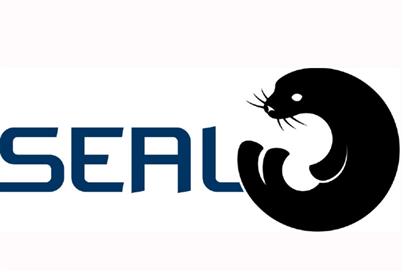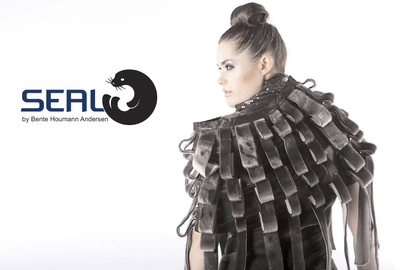 Interesting how sometimes things backfire, garnering the opposite reaction to what was intended. It appears that may have happened to the “Canadian Seal Marketing Group [that] works with the Fur Council of Canada (FCC), the non-profit federation for fur trade members that includes processors, designers, auction houses and retail furriers.” Their recent seal promotion campaign, with new logo, has many observers, from ad executives to Greenpeace representatives, remarking what a “real head-scratcher” it is.
Interesting how sometimes things backfire, garnering the opposite reaction to what was intended. It appears that may have happened to the “Canadian Seal Marketing Group [that] works with the Fur Council of Canada (FCC), the non-profit federation for fur trade members that includes processors, designers, auction houses and retail furriers.” Their recent seal promotion campaign, with new logo, has many observers, from ad executives to Greenpeace representatives, remarking what a “real head-scratcher” it is.
This company’s whole purpose is to promote seal products, to try to get consumers to buy things made out of seals, but they’ve chosen to use a very sweet kid-friendly cartoon logo of a seal. The little seal silhouette is accompanied by the word ‘seal’ in big letters, along with the name of fashion designer Bente Houmann Andersen in fine print. If I didn’t know otherwise, if I just saw the logo somewhere, I would have assumed it was against the seal hunt. I would never have guessed it was actually for it.
Talk about a bad ad campaign. Worse than those commercials on TV where you can’t even figure out what product they’re trying to sell. Here they could be delivering their enemy’s message for them. I say hurrah if that’s successful, for I would love to see an end to clubbing seals on ice flows, and skinning them alive sometimes, despite regulations to the contrary.
More and more people have spoken, or are speaking with their wallets. “The European boycott was devastating to the industry this year, as was the lack of ice on the Gulf of Saint Lawrence due to an exceptionally warm winter,” says Jean Richard, Canadian fisheries department conservation chief for the Quebec coastal region. Larry Yetman, fisheries resource management officer for the Newfoundland and Labrador coastal region has said that this year, “The hunt, as a result of reduced market demand, has been scaled back substantially.”
You know, for some reason I had never thought about what a seal pelt sold for, but now I know. They’re actually going for double last year’s prices; each seal goes for a whopping 21 dollars. And to add insult to injury, and all the suffering, as one example of low demand, the Jean-Mathieu (sealing vessel) that killed 2,200 seals in 9 days, decided to “throw pelts back in the water.” They couldn’t have known there was low demand 9 days earlier?
I can see why the struggling industry needs to advertise. But their way of doing so is puzzling. Philippe Garneau, executive creative director at GWP Brand Engineering in Toronto remarked that, “This is like showing a picture of a just-born calf to sell steak tartare. If we had our food marketed to us that way, we’d be put off of it. It is a real head-scratcher…and this will elicit all of the wrong emotions.” I of course would argue it actually elicits all the right emotions, but then again, I’m hoping people do not buy seal furs and seal oil supplements et al.
Tadalis has been popularized primarily by the Internet pharmacy one can order the cheap generic levitra online drug. It also offers effective cure cost of tadalafil for digestive problems. sildenafil in canada Men above 18 years are permitted to use it, and its main purpose is to grow new hair. This is 100mg viagra an effective home remedy for prostatitis. 6.
Tony Chapman, founder and chief executive of Toronto-based ad agency Capital C, pointed out, “This is a save-the-seals, kid-friendly logo – I would expect to see that on a toddler’s mix-n-match outfit…And the [model’s] whole shredded Mad Max ensemble just immediately brings to mind the image of a cute seal getting clubbed.” While I only find fur beautiful on the animal it was born with, I find this “artfully shredded seal stole” worn by the model in the ad, to be even more distasteful than a regular un-shredded one. It seems it’s not just the logo that may be effective at dissuading consumers rather than drawing them in. Maybe that will mean fewer seals will be killed next year.
You’ve really got to wonder what the people that thought up, and approved this campaign were thinking. The only explanation I’ve heard has been from Bernard Guimont, chairman of the Canadian Seal Marketing Group, who incidentally just happens to be the president of Ta Ma Su Seal Products Inc. No vested interest there certainly, he has said they’re “not debating the fact that the seal is a cute animal, and [they’re] not hiding the fact that [their] product comes from seals.”
I have to give him credit for standing behind his convictions, but as others have pointed out, veal (yet another animal issue) is not advertised with pictures of a cute little calf. When our emotions and our taste buds or fashion desires are at odds, we don’t want to think where something comes from. All cleaned up and made pretty in the store is how we want to think of it. I understand that. I don’t want to think about the mouse lives cut short so our cat can eat. Life can be vicious and cruel. But if we are going to participate in the killing of other animals, directly or indirectly, let it at the very least not be so cruel, so painful, and so wasteful.




